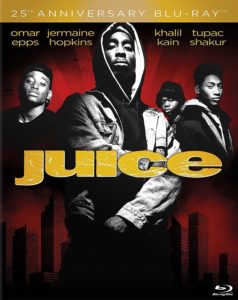By the time Ella Fitzgerald and Louis Armstrong collaborated on their first duet together, they were each already jazz giants. Fitzgerald was an acclaimed solo artist for Decca with many hits and more than 200 songs under her young belt, first with the Chick Webb Orchestra and then as leader of her own big band. Armstrong, known affectionately as Pops, was one of the leading singers, trumpet players and entertainers of the day; a star of both sound and screen. Together their talent knew no bounds and propelled them further to stardom, and today are some of the biggest highlights of both of their extraordinary careers.
For the first time, all of Fitzgerald and Armstrong’s classic duets are in one place: Cheek To Cheek: The Complete Duet Recordings, a new 4-CD and digital set will hit shelves November 10.
Part of Ella 100, Verve Records/UMe’s yearlong celebration of Fitzgerald’s centennial, the 75-track collection gathers their three timeless Verve albums–newly remastered versions of Ella and Louis, Ella and Louis Again and Porgy and Bess–along with all of their Decca singles, live recordings from Jazz at the Hollywood Bowl, recorded as a warm-up for Ella and Louis, plus several alternates and false starts from the Decca and Verve eras, illuminating their craft and good humor. Cheek To Cheek also includes unreleased material:“The Memphis Blues,” with Bing Crosby, from his radio show; several takes of Armstrong’s solo showcase, “Bess, Oh Where’s My Bess;” and an instrumental mix of “Red-Headed Woman.”
https://youtu.be/CIYS9EQWkXg
The comprehensive collection is rounded out with extensive essay by Ricky Riccardi, the world’s leading authority on Armstrong, plus detailed annotations and rare images from the archives. Need it fast? Pre-order Cheek To Cheek @ UMe.lnk.to/CheekToCheek4CD
In addition to gathering all of Fitzgerald and Armstrong’s duets, Cheek To Cheek also gives a unique opportunity to hear what it was like to be in the studio with these two titans. The closing disc is rife with a bevy of alternate takes and false starts, displaying their camaraderie, with many previously unreleased, until now.




 Paramount is pushing the power of Juice. A powerful morality tale steeped in ’90s urban culture, Juice marked the feature directorial debut of Spike Lee’s acclaimed cinematographer Ernest R. Dickerson and the first starring roles for Omar Epps and an electrifying Tupac Shakur.
Paramount is pushing the power of Juice. A powerful morality tale steeped in ’90s urban culture, Juice marked the feature directorial debut of Spike Lee’s acclaimed cinematographer Ernest R. Dickerson and the first starring roles for Omar Epps and an electrifying Tupac Shakur.




